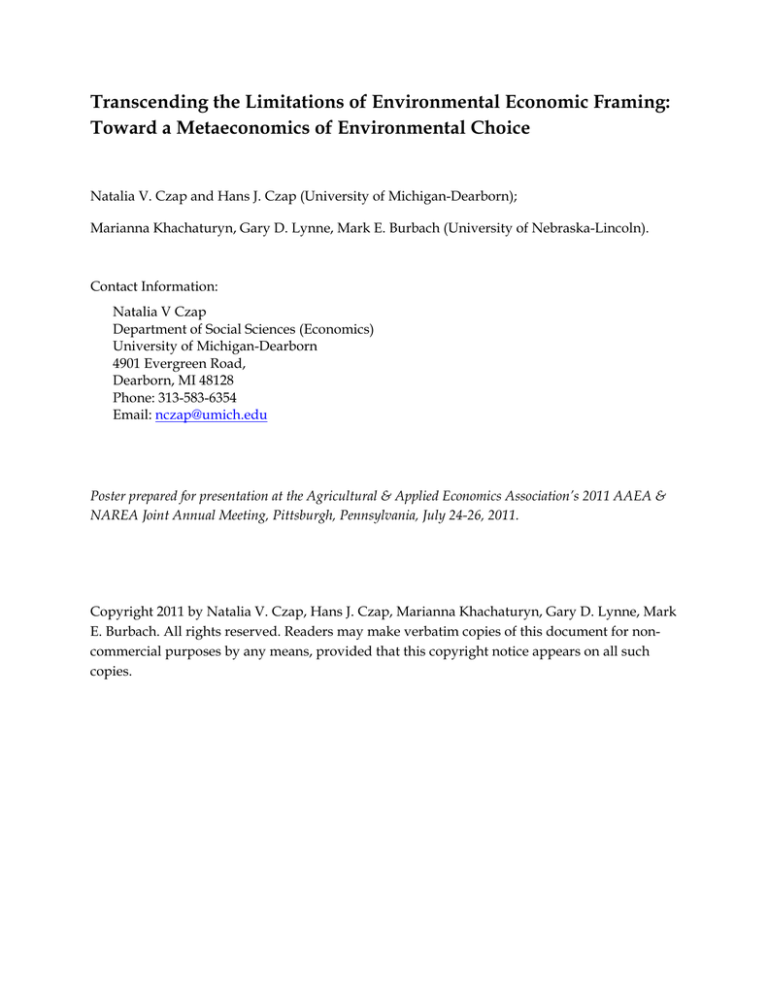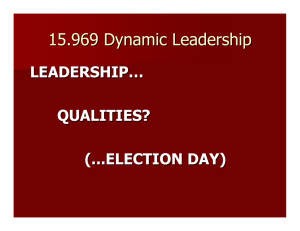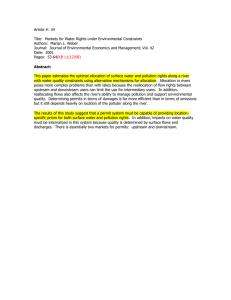
Transcending the Limitations of Environmental Economic Framing:
Toward a Metaeconomics of Environmental Choice
Natalia V. Czap and Hans J. Czap (University of Michigan-Dearborn);
Marianna Khachaturyn, Gary D. Lynne, Mark E. Burbach (University of Nebraska-Lincoln).
Contact Information:
Natalia V Czap
Department of Social Sciences (Economics)
University of Michigan-Dearborn
4901 Evergreen Road,
Dearborn, MI 48128
Phone: 313-583-6354
Email: nczap@umich.edu
Poster prepared for presentation at the Agricultural & Applied Economics Association’s 2011 AAEA &
NAREA Joint Annual Meeting, Pittsburgh, Pennsylvania, July 24-26, 2011.
Copyright 2011 by Natalia V. Czap, Hans J. Czap, Marianna Khachaturyn, Gary D. Lynne, Mark
E. Burbach. All rights reserved. Readers may make verbatim copies of this document for noncommercial purposes by any means, provided that this copyright notice appears on all such
copies.
Transcending the Limitations of Environmental Economic
Framing: Toward a Metaeconomics of Environmental Choice
Natalia V. Czap and Hans J. Czap (University of Michigan-Dearborn);
Marianna Khachaturyn, Gary D. Lynne, Mark E. Burbach (University of Nebraska-Lincoln)
1. Abstract
4. Experimental procedures
Results cont‟d
Purpose of the paper is to test dual-interest theory and the
metaeconomic approach to environmental choice, specifically:
• recognize the role of empathy as the basis for internalized shared
other-interest,
• tempering self-interest by empathetic concern.
Approach:
• a framed laboratory experiment on downstream water pollution.
Major findings:
• upstream farmers who practice conservation temper profit
maximization with empathy-based environmentally conscious
behavior,
• dual-interest metaeconomic model (MEM) produces better results
than the standard economics model (SEM).
Participants: 226 in total, 45% female, 27 years old on average
Average acreage placed under Conservation Tillage (CT) chosen by the
farmers in the first round
Cash earnings:
Mean of $28.9
for 70-90min
(opportunity
costs ~$8/hour)
Treatments:
• Empathy frame
• Self-interest frame
• Neutral frame
Tillage choice screen in
Empathy treatment:
snapshot from z-Tree.
Average CT
.
in acres,
max=500
250
Empathy framing
Self-interest framing
Neutral framing
200
150
In Self-interest treatment
“Intensive Tillage”
100
.
50
0
Upstream Farmer
2. Hypotheses
• H1: Pursuing self-interest (max profit) leads to lower levels of
environmentally conscious behavior.
• H2: Pursuing empathy-tempered self-interest leads to higher levels
of environmentally conscious behavior in metaeconomic model.
• H3: MEM produces more accurate results than SEM.
• H4: Personality adjusted MEM is more accurate than MEM.
• H5 A/B: Framing the decisions with the emphasis on empathy/selfinterest leads to more/less environmentally conscious decisions.
5. Results
Tobit regressions censored between 0 and 500.
Upstream Farmer‟s decisions about the level of conservation technology
SEM
BMEM
Intercept
502.7***
-44.6
IG
-72.5***
IG x IM
Hypothetical scenario: upstream farmers (UF) decide on how much
Conservation Tillage (CT) to use on their land (500 acres):
• higher levels of CT lead to lower chemical runoff and better water
quality downstream, but lower profit for UF
• lower levels of CT lead to worse water quality downstream, but
higher profit for UF
Players:
• Upstream Farmer (UF)
• Upstream Farmer/Downstream Water User (UF/DWU)
• Downstream Water User (DWU)
EMPATHY FRAME: SELECTED CT AND PAYOFFS (UF, UF/DWU, DWU)
Upstream Farmer/ Downstream Water User
Upstream
Farmer
500
250
0
500
500, 1000, 1500
500, 1250, 1250
500, 1500, 1000
250
1000, 750, 1250
1000, 1000, 1000
1000, 1250, 750
0
1500, 500, 1000
1500, 750, 750
1500, 1000, 500
PAMEM
PAMEM
+TR+GNDR
-26.5
-83.7
0.46***
0.42***
11.9***
IG (SELFISM) x IM(EMPATHY)
3. Experimental design
Upstream Farmer/Downstream
Water User
EMPATHY TR (1=Yes)
87.9*
SELF-INTEREST TR (1=Yes)
-45.5
GENDER (1=Female, 0=Male)
Nagelkerke R_sq.
113.3***
0.28
0.31
0.41
0.55
6. Conclusions
• Confirmed HYPOTHESES 1, 2 and 4.
• Mixed support for HYPOTHESES 3, 5A&B:
• UF equation strongly supports, UF/DWU no sig. difference
• Female UF (but not UF/DWU) are more environmentally conscious
than their male counterparts.
• UF/DWU who literally “walked in the shoes of” DWU made more
environmentally-friendly and empathetic choices than UF.
• UF/DWU decisions depends less on their personal dispositions, but
rather on the context.
• The findings suggest the importance of ethical context of moneyrelated decisions.
• Strong support for dual-interest metaeconomic approach.
Upstream Farmer/Downstream Water User‟s decisions about the level
of conservation technology
SEM
BMEM
PAMEM
PAMEM+
TR+GNDR
Intercept
414.5***
117.5***
119.8***
72.9
IG
-45.2***
0.31***
0.30***
IG x IM
4.1***
IG (SELFISM) x IM(EMPATHY)
EMPATHY TR (1=Yes)
66.1
SELF-INTEREST TR (1=Yes)
-7.27
GENDER (1=Female, 0=Male)
57.1
Nagelkerke R_sq.
0.25
*** - significant at 1%, ** - at 5%, * - at 10% level.
0.24
0.30
0.35
Selected References
Czap, N.V., Czap, H.J., 2010 An experimental investigation of revealed environmental
concern. Ecol Econ 69, 2033–2041.
Davis, M.H., 1983. Measuring individual differences in empathy: Evidence for a
multidimensional approach. J of Personality and Social Psych, 44 , 113-126.
Fischbacher, U., 2007. z-Tree: Zurich Toolbox for Ready-made Economic Experiments.
Experimental Econ. 10 (2), 171-78.
Hayes, W.M., Lynne, G.D., 2004. Towards a centerpiece for ecological economics.
Ecological Econ. 49, 287-301.
Ovchinnikova, N.V., Czap, H.J., Lynne, G.D., Larimer, C., 2009. “I don‟t want to be
selling my soul”: two experiments in environmental economics. J of Socio-Econ 38 (2),
221-229.
Sheeder, R.J., Lynne, G.D., in press. Empathy conditioned conservation: „walking-in-theshoes-of-others‟ as a conservation farmer. Land Econ.




